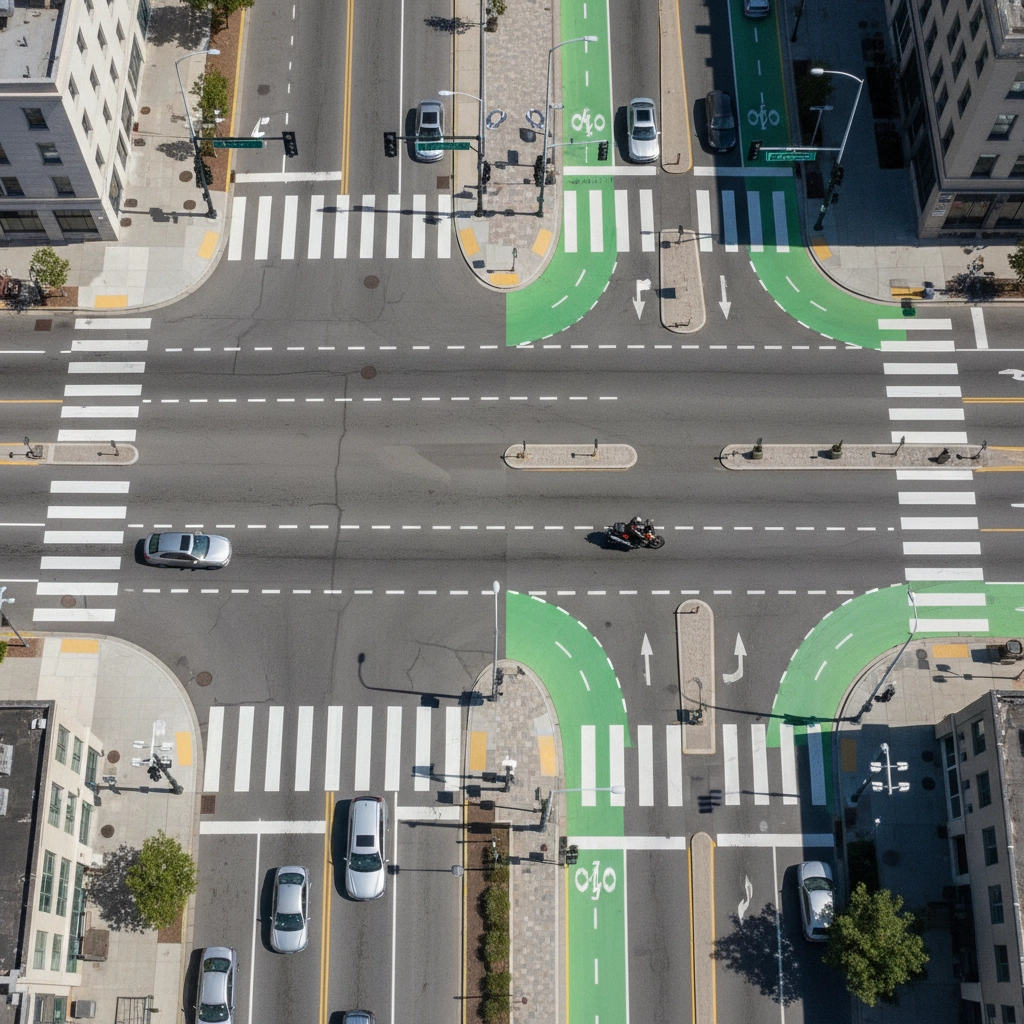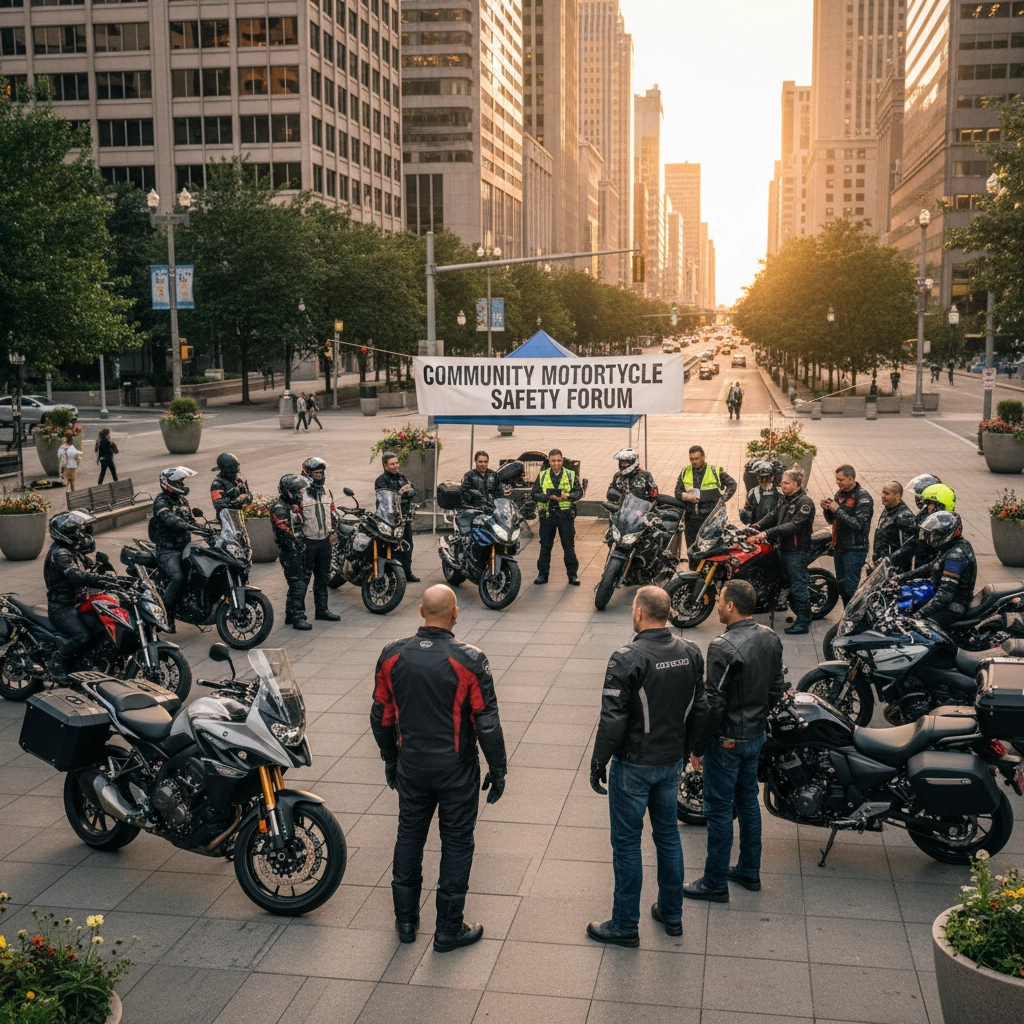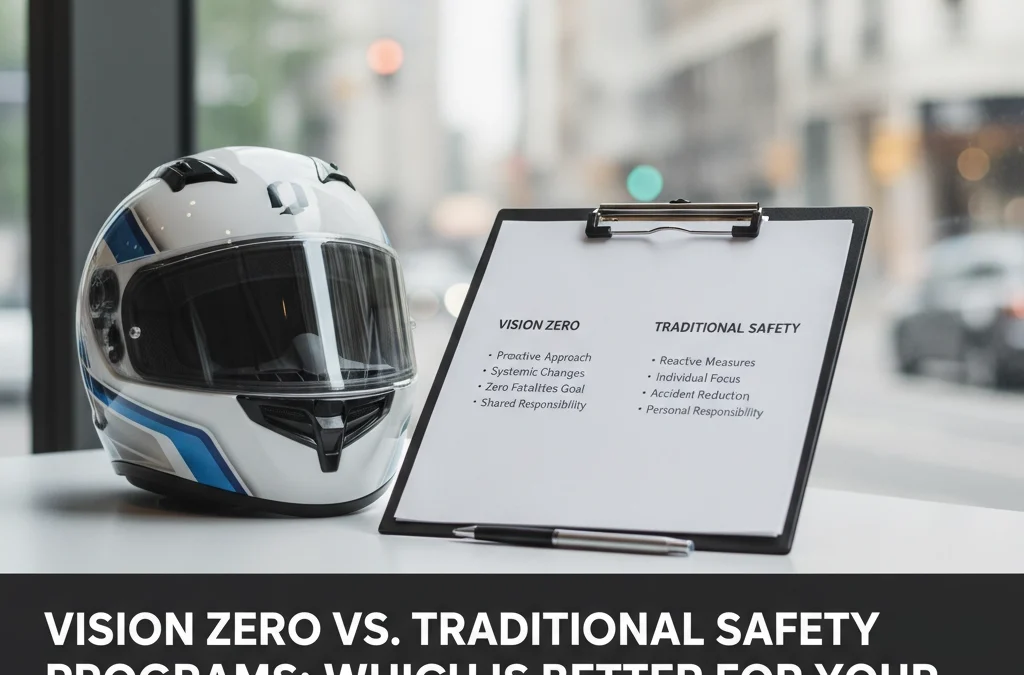Quick Answer: Vision Zero programs demonstrate superior results for motorcycle safety initiatives compared to traditional approaches. Vision Zero's comprehensive, system-wide focus on injury prevention rather than just collision reduction has shown measurable success, with cities like New York achieving 45% reductions in pedestrian deaths and San Francisco seeing 33% decreases in bicycle-related collisions. For motorcycle safety specifically, Vision Zero explicitly includes rider-focused components often underrepresented in traditional safety plans.
If you've ever wondered why some cities seem to make real progress on motorcycle safety while others struggle with the same old approaches, the answer often comes down to one fundamental choice: Vision Zero versus traditional safety programs.
Most people think traffic safety is just about enforcement and education until they see what happens when cities completely reimagine their approach to protecting vulnerable road users like motorcyclists.
Understanding the Fundamental Difference
What Traditional Safety Programs Actually Do
Traditional traffic safety approaches focus primarily on collision reduction and individual driver behavior. They typically respond to crashes after they occur, implement piecemeal safety changes in isolated locations, and rely heavily on enforcement and driver education without comprehensive system redesign. These programs often treat accidents as inevitable incidents rather than preventable events.
Think of it this way: traditional programs ask "Why did that person crash?" and then try to fix the behavior or the specific location where it happened.
The Vision Zero Revolution
Vision Zero fundamentally reframes traffic safety as a public health imperative rather than an engineering problem. Instead of asking "Why did that person crash?" Vision Zero asks "Why was that person so seriously injured in the crash?"
This shift focuses on preventing injuries rather than just preventing collisions. Vision Zero takes a Safe System approach, examining the entire transportation system holistically – including infrastructure design, policy, vehicle regulations, institutions, and community participation.

The framework operates on the principle that no one should die or be severely injured on roadways, with safety designed into the system from the ground up.
The Numbers Don't Lie
When it comes to measurable results, Vision Zero has demonstrated impressive success across multiple cities. New York City, which has the longest history of Vision Zero work in the U.S., reduced overall traffic deaths by more than 12% and pedestrian deaths by 45% between 2013 and 2023.
San Francisco measured an 18% decrease in traffic collisions overall, with bicycle-related collisions down 33% and pedestrian-related collisions down 32%. Hoboken, New Jersey achieved seven consecutive years without a traffic-related death through comprehensive Vision Zero implementation.
Perhaps most compelling: Montgomery County, Maryland tracked a 28% reduction in serious and fatal crashes on corridors where they implemented Vision Zero changes, compared to a 5% increase on non-Vision Zero roadways.
However, let's be honest about the challenges. Not all Vision Zero implementations achieve uniform success – only 2 of 18 studied Vision Zero cities experienced statistically significant decreases in total fatalities. This suggests that implementation quality and commitment level matter tremendously.
Why Motorcyclists Get Left Behind in Traditional Programs
Here's something that might surprise you: motorcyclists face a disproportionately high risk of severe injury and fatality in traffic crashes, yet traditional local safety plans often underrepresent their unique needs.
Traditional programs tend to focus on car-centric solutions. They might add a traffic light here or increase enforcement there, but they rarely consider how these changes specifically impact motorcycle safety.
Vision Zero Changes the Game for Riders
Vision Zero frameworks specifically address this gap by incorporating motorcycle-specific components into safety planning:
- Crash data analysis specific to motorcycles
- Community engagement with riders and motorcycle organizations
- High-risk location identification for motorcycle crashes
- Helmet use promotion and enforcement
- Roadway design features that support safer riding
- Targeted education and enforcement campaigns for motorcyclists
Cities like San Francisco have dedicated resources specifically to motorcycle safety within their Vision Zero initiatives, including free hands-on training and education programs with motorcycle clubs and shops.

System-Wide Implementation: The Key Difference
The most successful Vision Zero efforts are those implemented comprehensively across entire cities rather than on isolated streets. When cities apply systemwide changes – such as NYC's decision to lower speed limits to 25 mph on 90% of city streets and operate automated speed safety cameras 24 hours a day in school zones – the results are significantly better than traditional piecemeal approaches.
Traditional programs might fix the five most dangerous intersections in a city. Vision Zero asks: what if we made every intersection safer from the start?
Strategic Comparison: What Works When
| Approach | Focus | Timeline | Motorcycle Consideration | Cost Effectiveness |
|---|---|---|---|---|
| Traditional | Collision prevention | Reactive, post-crash | Often underrepresented | Limited documentation |
| Vision Zero | Injury prevention | Proactive, preventive | Explicitly included | NYC saved $90M in healthcare costs over 5 years |
When Traditional Approaches Make Sense
Traditional approaches might work better if you have limited resources and must focus on specific high-risk locations first, you're implementing a pilot program before broader commitment, or you face political constraints that prevent systemwide changes.
When Vision Zero Delivers Superior Results
Choose Vision Zero if you aim for comprehensive, long-term safety culture change across your entire jurisdiction, want to address the root causes of motorcycle crashes through system design rather than just education, have buy-in from multiple departments and stakeholders, and you're committed to allocating resources systemwide.
The Institutional Integration Factor
Vision Zero requires steering committees and task forces with representation from all actors involved – from transportation planners to law enforcement to community members. This institutional coordination is often absent in traditional safety programs.
This matters for motorcycle safety because riders need advocates at the planning table who understand their unique vulnerabilities and needs.
Real-World Implementation: What Success Looks Like
Cities implementing effective Vision Zero programs for motorcycle safety typically start with comprehensive crash data analysis specific to motorcycles, then move to community engagement with riders and motorcycle organizations. They identify high-risk locations for motorcycle crashes and implement targeted improvements.
But here's the crucial difference: they don't stop there. They integrate these motorcycle-specific improvements into broader systemic changes that make the entire transportation network safer for all vulnerable road users.
Making Your Choice: A Practical Framework
For maximum motorcycle safety impact, adopt Vision Zero principles while strategically sequencing implementation. Start with Vision Zero's framework – crash data analysis specific to motorcycles, community engagement with riders, high-risk location identification – then implement changes systemwide rather than limiting interventions to only the most dangerous streets.
This prevents danger from simply moving to unimproved areas and creates lasting cultural and infrastructural change that protects all vulnerable road users, including motorcyclists.
The evidence is clear: while traditional safety programs can provide targeted improvements, Vision Zero's comprehensive, system-wide approach delivers superior results for motorcycle safety initiatives. The question isn't whether you can afford to implement Vision Zero – it's whether you can afford not to.
Ready to transform your motorcycle safety initiative? Learn more about implementing comprehensive safety programs at Ride Fear Free or connect with our team to discuss your specific needs.
Contact Information:
- Website: www.RideFearFree.net
- AI Receptionist: +1 (970) 693-4854
- Dan Kost, CEO – Connect on LinkedIn
Share this post:
What's your experience with motorcycle safety programs in your area? Share your thoughts in the comments below and subscribe for more insights on improving rider safety nationwide.
Tags: #Motivation #Branding #Strategy #Marketing #AdvertisingAndMarketing #digitalmarketing #Innovation #Sports #MotorcycleSafety #VisionZero #TrafficSafety #RiderSafety #PublicHealth #TransportationPolicy

